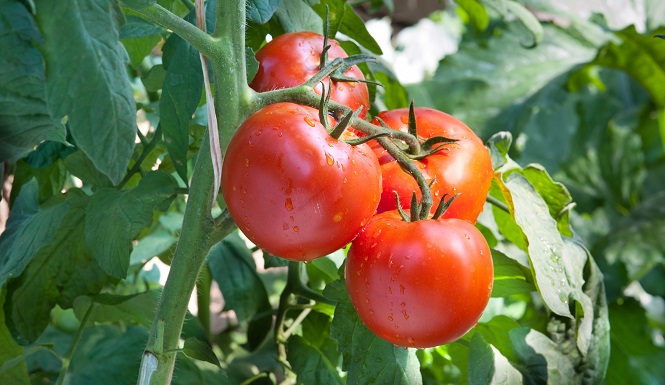One Big Step Towards Food Independence
Tomato sauce is the pillar of most of my family’s favorite meals. Spaghetti, chili, pizza, stews – you name it, we love to slather tomato sauce all over everything.
Like almost everyone else at the Grow Network, I grow tomatoes every year. Some years are great and I am overrun with red fruits, and some years I end up wondering what hit me. But this year I am going to be more scientific about the process.
I want to be tomato sauce sovereign!
Tomato Sauce Sovereignty
I’ll keep you updated as I work toward tomato sauce sovereignty. Feel free to let me know if you have questions about what I’m doing… and why. I’m sure we’ll all have a good laugh along the way.
In this first go-round, I am hoping to can 24 pints of tomato sauce. That is about a six-month supply if you use one pint of sauce per week. Of course, my family could eat a lot more. And we could produce a lot more if I could only get my kids to help! LOL!
I like to make thick tomato sauces, and you need about three pounds of tomatoes for each pint. So, I figure I’ll need a total of about seventy-two pounds of tomatoes.
How Many Tomatoes Does One Plant Yield?
So now I need to figure out how many tomato plants I need to grow. In my experience, production varies widely depending on spacing, soil fertility, gardening experience, and more.
I have gotten yields that range from 2 lbs per plant all the way up to 16 lbs per plant. For this experiment, I am guesstimating that I’ll get around 8 lbs per plant – which means I’ll need 9 plants. Although, I am actually planting 14 plants…
Read more: 15 Simple Homemade Fertilizers
Learning from Past Mistakes
Oh yes, if you’ve done any gardening at all, then you know by now that you should bank on some failures.
Have you ever lost an entire crop because the tomatoes rotted on the ground? Have you ever walked out in the morning to find your best plants largely consumed by horn worms? Have you ever had a tomato plant that grew big and strong but never produced much fruit?
Me too. So, in a future update I’ll discuss staking and pruning methods that help you to get the most from each plant. I’ll also go into some details on how I stagger the nutrients to optimize production. You just might be surprised to learn one thing that you really shouldn’t do – especially near the end. I’ll keep you updated.
Marjory Wildcraft is an Expedition Leader and Bioneer Blogger with The [Grow] Network, which is an online community that recognizes the wisdom of “homegrown food on every table.” Marjory has been featured as an expert on sustainable living by National Geographic, she is a speaker at Mother Earth News fairs, and is a returning guest on Coast to Coast AM. She is an author of several books, but is best known for her “Grow Your Own Groceries” video series, which is used by more than 300,000 homesteaders, survivalists, universities, and missionary organizations around the world.









COMMENTS(15)
I HAVE MADE SAUCE BEFORE AND USED IT IN A LOT OF DIFFERENT THINGS. BUT NOW I AM INTO SALSA, I MAKE MILD, MEDIUM, AND HOT. I HAVE SEVERAL PEOPLE THAT LOVE IT. WOULD YOU LIKE TO TRY MY SALSA? FRED
As far as staking, I’ve been using bamboo poles for the past 3 years. No tomatoes end up on the ground unless I miss picking them and they are over ripe. I use 1″ 10ft long poles, 1 for each tomato plant, 2 rows running parallel to each other. The tops of the poles meet in the middle and cross enough to put a pole in the center. It’s all ties together in the middle. I then tie 5 or 6 ft bamboo poles across each side, usually 4 high.
We have a tenancy to get high winds of 30 to 50 mph about the same time the majority of the tomatoes are ripe. We lost a lost of tomatoes before I bought the bamboo. I’m still not sure about growing my own or what kind to get. Anyway, I should get another 3 years, at least, out of the poles. We tried everything else, this is the only thing that hasn’t blown over.
Thanks so much for your staking info. I do need to get a good article out about staking. I really appreciate your comments.
We didn’t stake, but should have. Some of our paste tomatoes are as big as softballs with very little juice. We have been picking small toms and moving to the greenhouse to ripen–usually 2 days. Since 8/20 we have done pizza sauce, 3 batches of spaghetti sauce, and V-8 juice. Left to do: 1 more spaghetti sauce, plain sauce, 2 tomato soup, tomato juice cocktail, and just plain tomatoes.
I learned from my dad back in the 1940s. Plants 3′ apart in a row, wood stake in between and at each end. Using 6 ply cotton string on a cone we tied at the end post and down the row rapped around each post, around the end and back the other side the same. We did acres of these when I was a kid. I now use 6′ T bar fence stakes they don’t rot or brake.
This is how I do it too. I often use nylon bale twine and gather it up at the end of the year and use it again next year. But the stake and twine make a sort of cage that holds tomatoes up if your stake is tall enough.
I have so many100s jars of tomatoes in various forms from salsa, to juice, whole and even ketsup. I use farm feild fence in 75 ft rows interplanted with other crops and grow about 20 kinds and sell seed. I use the oldest jars first and make and freeze a spagetti/pizza sauce that is awesome .
Sharon,
Two questions:
1. When you say you interplant with other crops, do you plant directly between the tomato plants or do you mean you alternate the rows? If you are planting directly between plants, I’d love to know what does well.
2. When saving seeds with multiple different tomato varieties, I’m aware there is a risk for crossing of strains and the resulting seed being a gamble. What technique do you use to ensure that you reap what you sow? 🙂
Thanks,
Roger
sure would like to have some of these recipes for spaghetti sauce (no meat)
I am like Sharon and use field fence, 2 fifty foot rows, plants are spaced every 3 feet. I use 6 ft fence and the bottom is about 1 foot off the ground so the height is 7 ft. I plant directly under the fence and try to train them to weave through the fence. Still have to tie though. In Volusia county we get two crops a year. We can, freeze and dry and give away. On thing i do is after blanching i separate the peels and seeds then grind the peel and add it too the sauce
Any updates on this project Marjory? Would love to hear how it went, as well as any changes you’ve made in subsequent years.
I love all the stuff and education you send. I am in the process of selling my home, a condo, ugh! And hope to move to Florida.
I don’t order anything because it would be just more baggage. Thanks to your many articles, I really want to grow my own food when I move to Florida. I want a home with growing property. I am very interested in having a green house and using that bale hay method of growing, and I want some chickens and rabbits for consumption. You have awakened the farmer in me. Thank you.
Carol Shea
I have been trying to make my own spaghetti sauce and pizza sauce, but they tend to be to watery. I came upon a nice pizza sauce recipe, but misread the recipe. All the seasoning ingredients were written in Tablespoons except for hot pepper flakes were in teaspoons. Wasted 12 pounds of tomatoes as the sauce tasted like very hot sauce. I also can my own V-8 juice and quartered tomatoes. I would like to make a good tomato sauce and spaghetti sauce that isn’t watery.
I’ve found that almost anything long and strong enough works as a stake. Lately I’ve been using the aluminum structural bits of my kit greenhouse that collapsed under the snow load one night. I’ve also used all sorts of branches and sapling trees. Most hardwoods rot out to uselessness after one or two years for me, but eastern white pine seems to last a lot longer, which is handy since it also grows branches that make excellent (slightly curved) stakes in incredible abundance.
As for making sauce, I really cannot recommend using a crock pot enough. I put away about fifty quarts of tomato sauce last year, and cooking it all down any other way would have driven my wife and I utterly mad. You just put the juice and a bit of salt (if you like) in the pot, and let it cook down until it’s thick enough for you. Usually that’s half to two thirds of the volume which takes a day or two. I stir it maybe twice a day, just to check the consistency. From there, you just can it. It’s an incredibly low effort method, and you can run as many batches as you have crock pots, which lets you more easily salvage bird/insect damage and get fruit at the peak of freshness both.